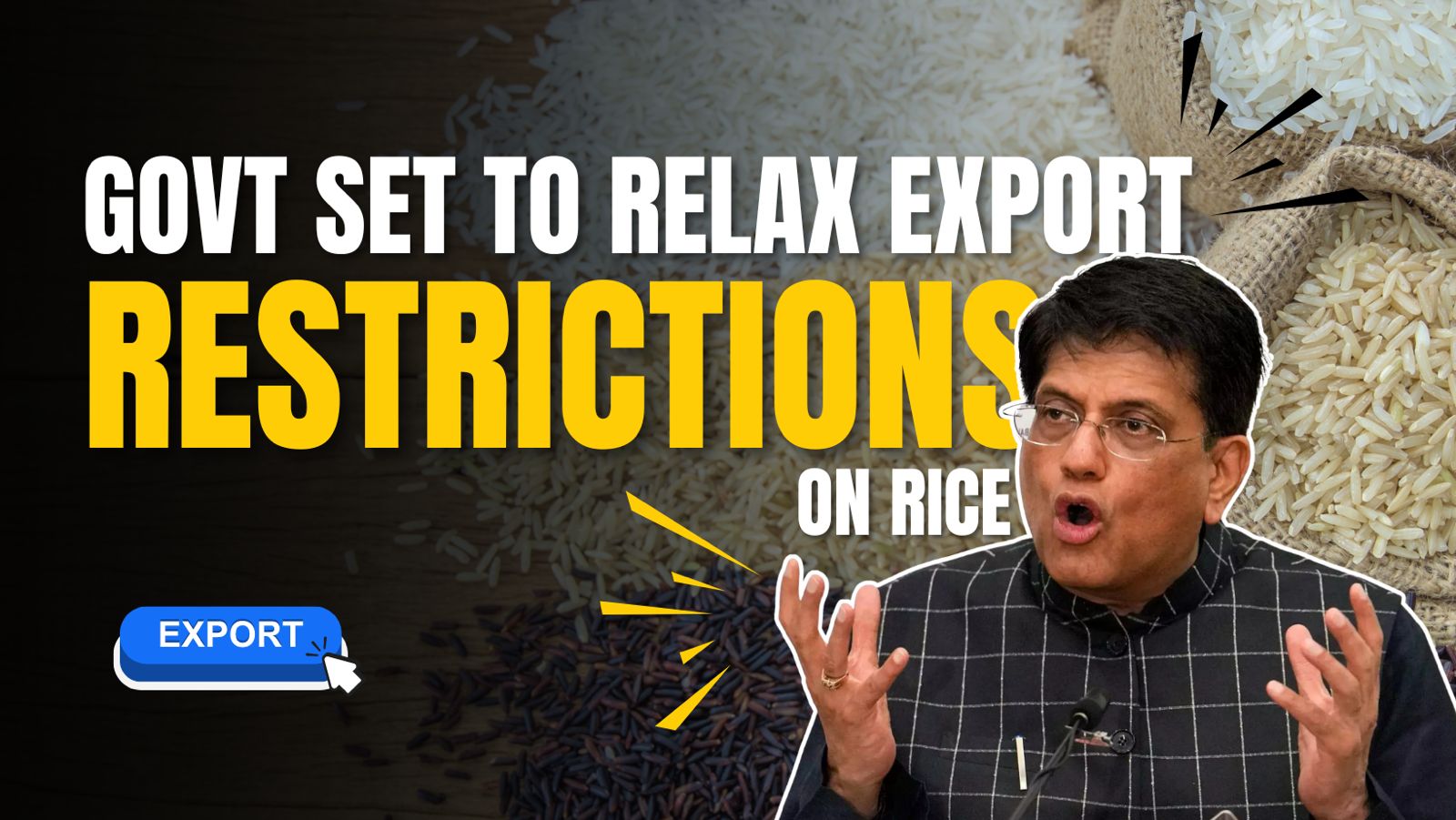
In a significant development for India’s rice trade, the government is considering relaxing restrictions on rice exports due to surplus stocks and strong kharif sowing. This move could include increased shipments of various rice varieties under government-to-government (G2G) contracts and a possible lifting of some export restrictions imposed last year. Additionally, states may receive additional rice allocations to manage the surplus and reduce carrying costs, which have been pushing up food subsidy expenses.
Surplus Rice Stocks and Buffer Levels
Currently, the Food Corporation of India (FCI) holds 47.01 million tonnes (MT) of rice stocks, which includes 32.98 MT of rice and 14.12 MT receivable from millers. This stockpile significantly exceeds the buffer norm of 10.25 MT for October 1, highlighting the urgency to address the surplus. The government aims to reduce these stocks to alleviate the financial burden associated with storage and transportation costs, which are estimated at Rs 3,975 per quintal at the beginning of the fiscal year.
Food Corporation of India (FCI) holds 47.01 million tonnes (MT) of rice stocks, which includes 32.98 MT of rice and 14.12 MT receivable from millers.
Kharif Sowing and Monsoon Impact
The current monsoon season has been favorable, with overall rainfall just 1.2% below the long-period average, boosting kharif paddy sowing. As of July 19, 2024, the area under paddy cultivation, the most critical kharif crop, increased by 6% to 16.6 million hectares compared to the previous year. With the new season’s paddy arrival expected on October 1, the government must act swiftly to manage the stock in the central pool.
Rice Trade Restrictions and Proposals for Relaxation
In response to the surplus, the government is considering various measures, including lifting the ban on certain non-basmati rice varieties and reducing the minimum export price (MEP) of $950 per tonne imposed last year on aromatic long-grain basmati rice. Commerce and Industry Minister Piyush Goyal has indicated that a Group of Ministers will evaluate the demand-supply and price situation before making a final decision.
Key Recommendations Under Consideration
To address the situation, a Group of Ministers (GoM) is set to convene to discuss strategies for managing the surplus rice. Possible measures include:
- Increased rice shipments under government-to-government (G2G) contracts: This would allow for the export of specific rice varieties from the government’s stockpile.
- Lifting some general export restrictions: A relaxation of the export ban on certain non-basmati rice varieties is being contemplated, subject to a review of demand-supply dynamics and price trends.
- Reduction of the minimum export price (MEP) for Basmati rice: This could enhance the competitiveness of Indian Basmati rice in the global market.
- Allocation of additional rice to states: States may receive increased quantities of rice at subsidized rates to augment their food security programs.
| Recommendation | Details |
|---|---|
| Allow export of non-basmati rice | With a minimum export price |
| Remove duty on parboiled rice exports | To boost global competitiveness |
| Assess buffer stock sufficiency | Ensure stock meets demand for two years |
| Reduce minimum export price for basmati | To $950 per tonne |
These proposals aim to ensure that the buffer stock remains sufficient to meet domestic demand for at least two years while revitalizing India’s position in the global rice market.

Domestic Market Adjustments
To further manage the surplus, the FCI plans to sell rice in the open market at Rs 28 per kg from next month, a slight reduction from last fiscal’s price of Rs 29 per kg. Last year’s attempt to sell rice at Rs 29 per kg saw limited success, with only 0.1 MT sold. This year, the FCI will also provide rice to agencies like Nafed, NCCF, and Kendriya Bhandar at Rs 24 per kg for resale under the Bharat Rice initiative at Rs 29 per kg.
Impact of Previous Restrictions and Export Statistics
In July 2023, India banned white rice exports and imposed a 20% duty on parboiled rice to stabilize domestic prices, which had been rising in double digits since October 2022. Retail rice prices saw a 12.15% increase in June, underscoring the inflationary pressure. Despite these restrictions, the government allowed some rice exports to meet food security needs of other countries on a case-by-case basis.
India, the world’s largest rice exporter, saw its exports decline to 15.7 million tonnes in the financial year ending March 2024, down from 22.2 million tonnes in 2022. Non-basmati rice exports, which were 17.86 million tonnes in 2022, were particularly affected. Major rice-producing states like Punjab, Chhattisgarh, Odisha, Andhra Pradesh, West Bengal, and Uttar Pradesh have a significant stake in the government’s upcoming decisions.
Key Export Statistics
| Year | Total Rice Exports (MT) | Non-Basmati Rice Exports (MT) | Major Importers |
|---|---|---|---|
| 2022 | 22.2 | 17.86 | Malaysia, Singapore, Djibouti, Qatar, Iraq |
| FY Ending 2024 | 15.7 | N/A |
Conclusion
The government’s contemplation of relaxing rice trade restrictions reflects an adaptive response to the current surplus and favorable agricultural conditions. The measures under review, including lifting export bans and reducing export duties, aim to balance domestic supply needs with maintaining India’s competitive edge in the global market. As the Group of Ministers, led by Home Minister Amit Shah, prepares to make a final decision, stakeholders across the rice industry and export markets keenly await the outcome, which will have significant implications for India’s agricultural economy and global trade relations.
To understand more, How indian exporters are tackling this situation, Click here: Indian Exporters Requests for National Shipping Line to Enhance Global Competitiveness
Check more of our Blogs & Do Follow us on Our Social Media channels to stay ahead in your rice business
